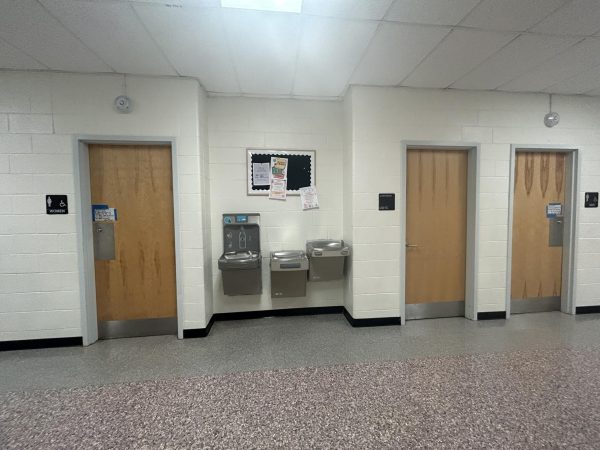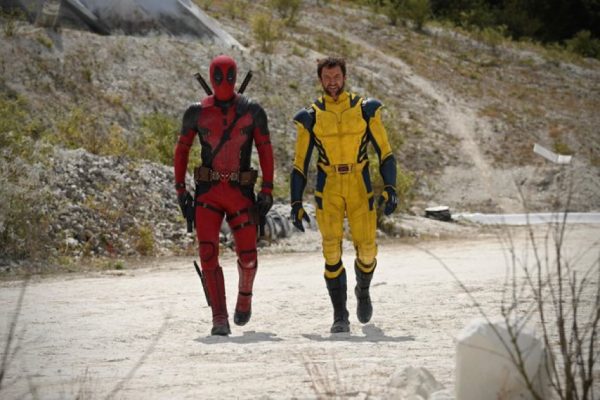The Effect of Athletics on College Admissions
Some lucky, and talented, Dominion athletes have already committed to colleges and it’s only October—neither the quarter nor the fall sports season has ended. All of these individuals, in my eyes, have chosen schools at which they can prosper outside the realm of sports. Nationwide, however, that is not the case, with athletes gaining entry into schools that they never would’ve been able to attend had they not excelled in sports.
CNN perhaps put it best when they noted, in 2014, “Some college athletes play like adults, read like fifth-graders.” It’s frustratingly true, especially for a nonathletic high school senior languishing over the admissions process, as the discrepancy in application standards for athletes and non-athletes is egregious.
“The original sin of college sports is willfully admitting deficient or unprepared students into an institution,” says Gerald Gurney, former president of the National Association of Academic Advisors for Athletics. “Admissions, specifically special admissions, is the single most problematic issue in college sports. It’s particularly troublesome with highly selective institutions.”
The National Collegiate Athletic Association (NCAA) sets nationwide academic standards that must be met by student-athletes in order for them to participate. (Do schools themselves not require this? High schools have academic standards that must be met by student athletes if they wish to participate.) Admissions practices, however, are left in the hands of individual institutions, allowing for the bypassing of “standard or normal entrance requirements”—the same requirements that, often enough, must not only be met but exceeded by non-athlete applicants for them to simply get noticed—through “special requirements programs,” according to Jake New of Inside Higher Education.
The majority of non-athletes accepted into the University of North Carolina, Chapel Hill—one of the nation’s best public universities—in 2013 had a GPA of 3.7 or higher and an average SAT (Critical Reading and Math) score of 1308, according to About Education and CollegeData. (Two years on, the amount of college applicants nationwide only continues to grow and because of that, numerical admissions benchmarks have only continue to rise.) That same year, accepted athletes had average GPAs and test scores of 3.43 and 1060, according to the University itself. The difference between the two is asinine and unacceptable. Numerous students who have dedicated themselves to academics rather than athletics have been denied the opportunity to study at such a great school. (It’s also a public university, meaning that intelligent North Carolinians possibly won’t be able to study at an inexpensive state school that can also boast quality academics.)
That same university admitted 341 football and basketball players under “special-talent policies,” meaning they wouldn’t have been admitted had they not excelled in sports. A tenth of that 341 (34) failed to score a 400 on the verbal SAT or a 16 on the English portion of the ACT—the widely-held threshold for college literacy—as stated by the University via CNN. Applicants with these results should be applying to community college rather than courted by the nation’s best. (There’s nothing wrong with community college; it’s just that community college students are on a different level academically than those of UC Chapel Hill.)
The University of California, Los Angeles, another of the nation’s greatest public universities, has similarly abysmal and unfair—again, especially to a non-athlete applicant—athlete acceptance standards. They had even more athletes—15 on the ACT English, 58 on the SAT reading—fall below the threshold, with the average athlete SAT reading score a measly 489, according to CNN. Non-athletes admitted in 2013 had an average score of 619.
UCLA’s sister school, Berkeley, quite possibly the nation’s best public university, is alone in having raised the bar for student-athletes. (They’ve really just hoisted it from the ground.) This fall, forty percent of accepted athletes must have a GPA of 3.0 or higher, with that number rising to sixty and then eighty percent in the next two years, according to Jeff Faraudo of San Jose Mercury News. This requirement still pales in comparison to the average GPA of accepted non-athletes—surprise, surprise—which is 3.91, according to the University itself.
These statistics barely scratch the surface. (I’ve only gone over elite universities.) Last year, Mark Schlissel, President of the University of Michigan—another great public university that happens to be the home of the nation’s largest college football stadium—admitted: “We admit students that aren’t as qualified.”
Stanford University, arguably the nation’s, if not the world’s, best institution of higher education, has reportedly never been one to lower its academic standards for athletes. This, in a turn of events that should surprise no one, is simply untrue. The median football player of the University’s 2009 recruitment class had an SAT (Critical Reading, Writing, and Math) score of 1800, well below the average for admitted non-athletes. According to Jeremy Majerovitz of The Stanford Daily, this statistic placed the majority of the University’s athletes in the “bottom ten percent in terms of test scores.” These athletes are taking the spots of great young minds longing to excel further in college; it’s just unfair.
Stanford isn’t alone amongst top schools: according to a study undertaken by Princeton University researchers, athletic recruitment, at ten of the nation’s most elite colleges, offered an admissions boost equivalent to scoring roughly 200 points higher on the SAT. Jonathan R. Cole, former Provost of Columbia University, states, “Roughly 20 percent…of the entering classes at the Ivy League universities and leading small liberal arts colleges are recruited athletes.” In contrast, roughly five percent of students at the Universities of Michigan and Notre Dame—schools well known for, if not characterized by, their athletics—and the Pac-10, now Pac-12, are recruited athletes.
This is nothing new—the Ivy League was founded, in 1954, as an intercollegiate athletic conference and now supports more sports teams than any other conference in the nation, the aforementioned Cole says. Today, though, these athletes are graduating in the “lower third of their graduating class” despite having about a 30 percent better chance of getting in back during the admissions process—their admission is again to the detriment of hopeful, non-athlete applicants—according to Cole.
These kids are smart, with GPAs and SAT scores well above the national average, but are they Ivy League, Amherst, Williams-smart? We’ve all seen how these great schools tend to gamble with their endowments, should they really be spending so much on recruitment?
Stanford’s Student-Athlete Handbook reads, “It will cost Stanford Athletics almost $100 million to put Cardinal teams into competition this year.” Stanford is not alone in this phenomenon. Charles Clotfelter, a professor at Duke University, says “draft-worthy” NCAA football players may be worth as much as $500,000 and “draft-worthy” NCAA basketball players can be worth nearly twice as much. The vast majority of non-athletes aren’t even worth four years’ tuition.
Is all of this worth it? College sports instill a sense of camaraderie amongst current students and perpetuate those feelings amongst alumni. They can also act as a gateway to the institutions themselves—not in the admissions sense—as my first experiences with institutions of higher education were through tailgating and game attendance at my parents’ alma mater. They can also attract donations. (Donations are tricky, though, because they’ll drop almost simultaneously with a losing team’s record. Reliance on so fickle an allotment would only mean a greater emphasis on the recruitment of “better,” in the most subjective sense, athletes, and that’s what we’re trying to avoid here.)
The aforementioned Clotfelter states, “most of [these] programs lose money.” (For example, the American Council of Education says that Duke’s powerhouse basketball program doesn’t even turn a profit.) Would this money not be better spent on the construction or augmentation of academic facilities?
The athletes being recruited by schools harboring some of the nation’s greatest athletic programs are exceptionally talented but I do not believe that such talent warrants treatment this woefully preferential. One’s college experience is meant to be a period of social and intellectual maturation. So great an emphasis on “being the exception” by universities can stunt students’ growth and does little to prepare them for the future, as it so rarely occurs in adult life.












